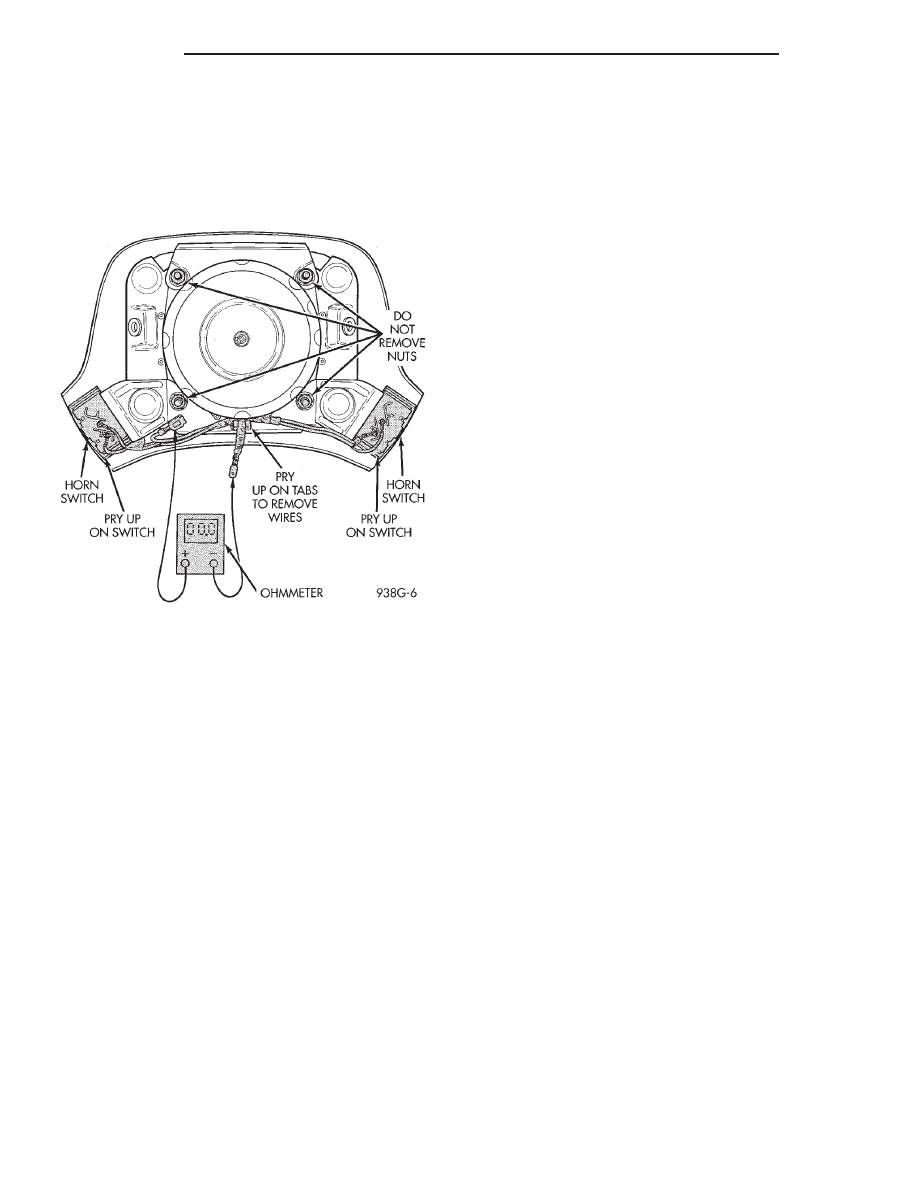Chrysler New Yorker. Manual - part 75

HORN SWITCH
(1) Using ohmmeter, connect one lead to ground
wire and the other lead to the positive wire (Fig. 3).
(2) Depress horn switch, should have continuity
repeat for other switch. If no continuity replace
switches.
HORN RELAY
(1) Remove horn relay.
(2) Using ohmmeter, test for continuity between
ground and terminal 12 of junction block.
(a) When the horn switch is not depressed, no
continuity.
(b) Continuity to ground when horn switch is
depressed.
(c) If continuity is not correct repair horn switch
or wiring as necessary. Refer to Group 8W, Wiring
diagrams.
(3) Using voltmeter, test voltage at:
(a) Terminal 11 and 13 test for battery voltage
from fuse F30.
(b) If voltage is incorrect repair as necessary.
Refer to Group 8W, Wiring Diagrams.
(4) Insert a jumper wire between terminals 13 and
15 of the junction block.
(a) If horns sound replace relay.
(b) If the horns do not sound, install horn relay
and refer to Horn Diagnosis and Testing.
SYSTEM TEST
CAUTION: Continuous
sounding
of
horns
may
cause horn relay to fail.
Check fuse 18 in the Junction Block and fuse L in
the Power Distribution Center. Refer to Horn System
Test table.
Fig. 3 Horn Switch
8G - 2
HORNS
300M
DIAGNOSIS AND TESTING (Continued)